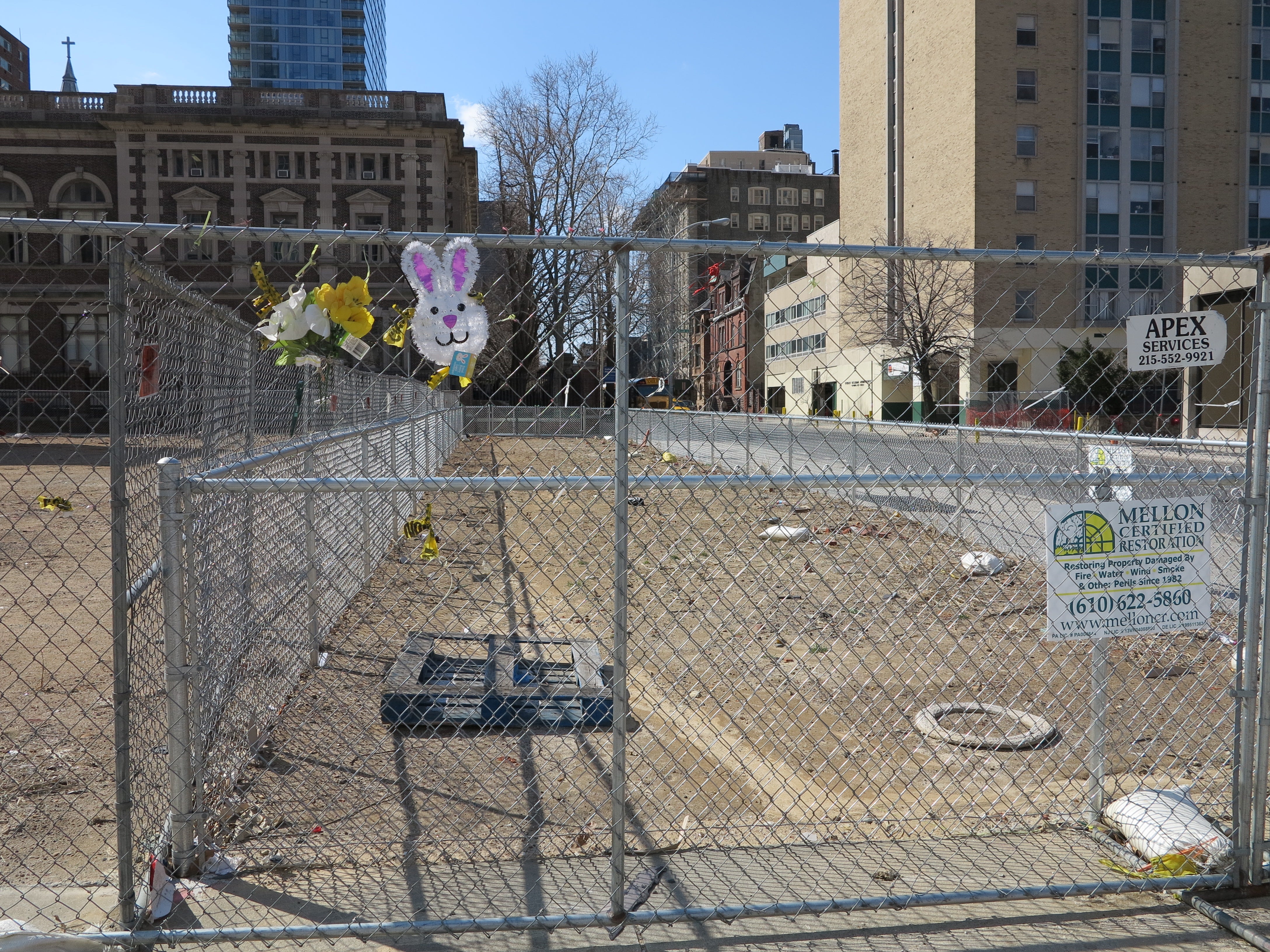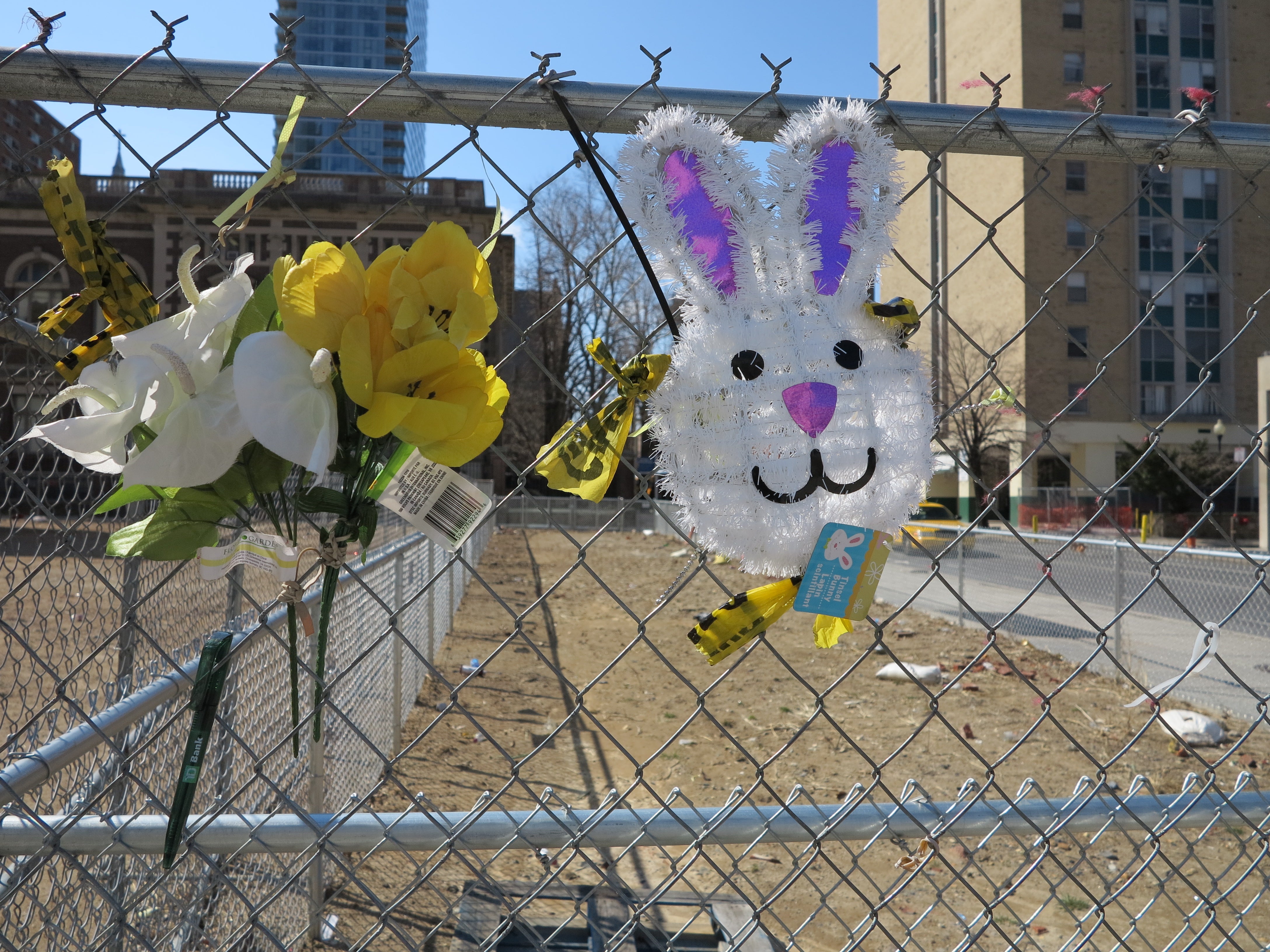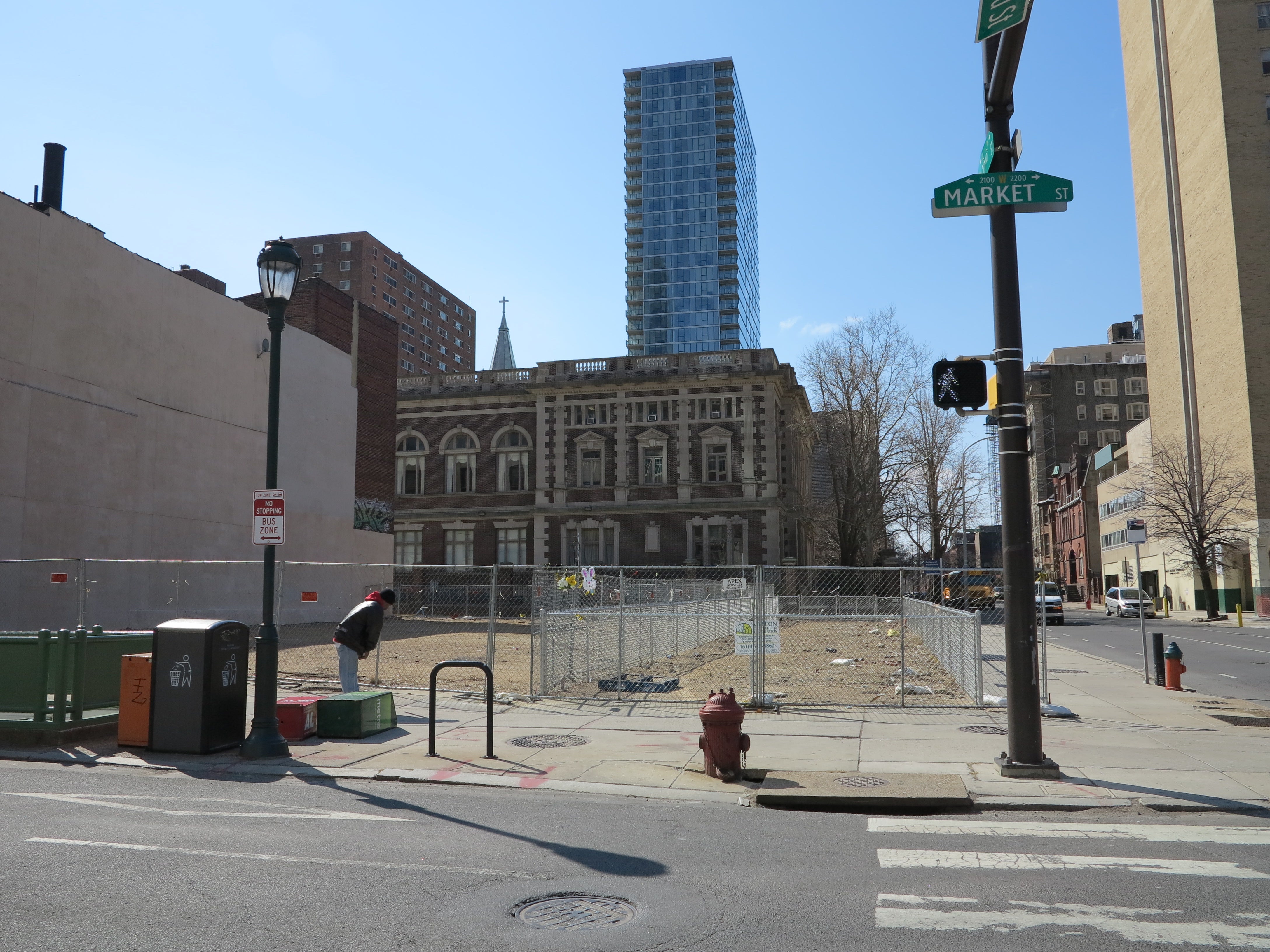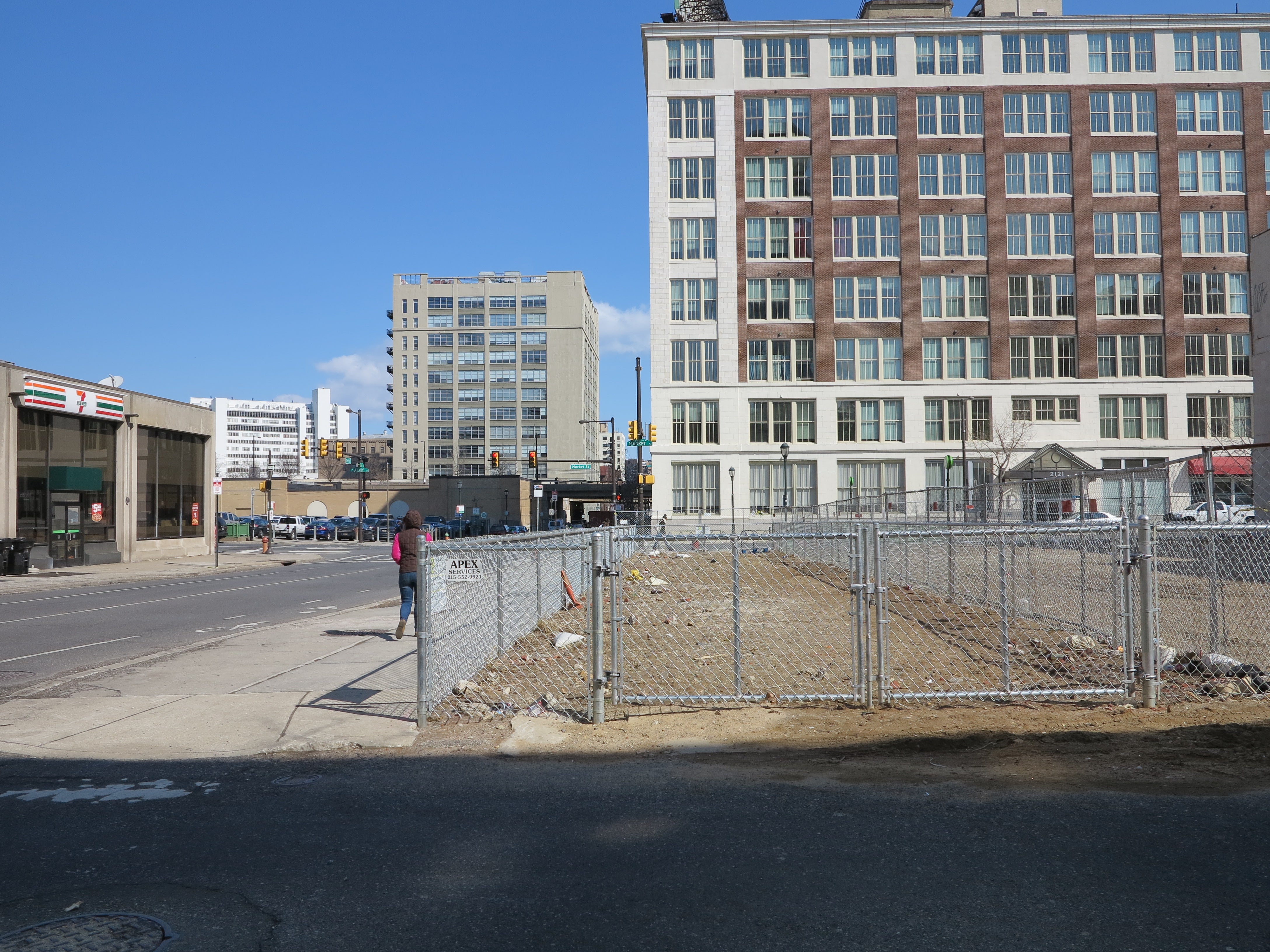Aspirations for 22nd and Market memorial park design
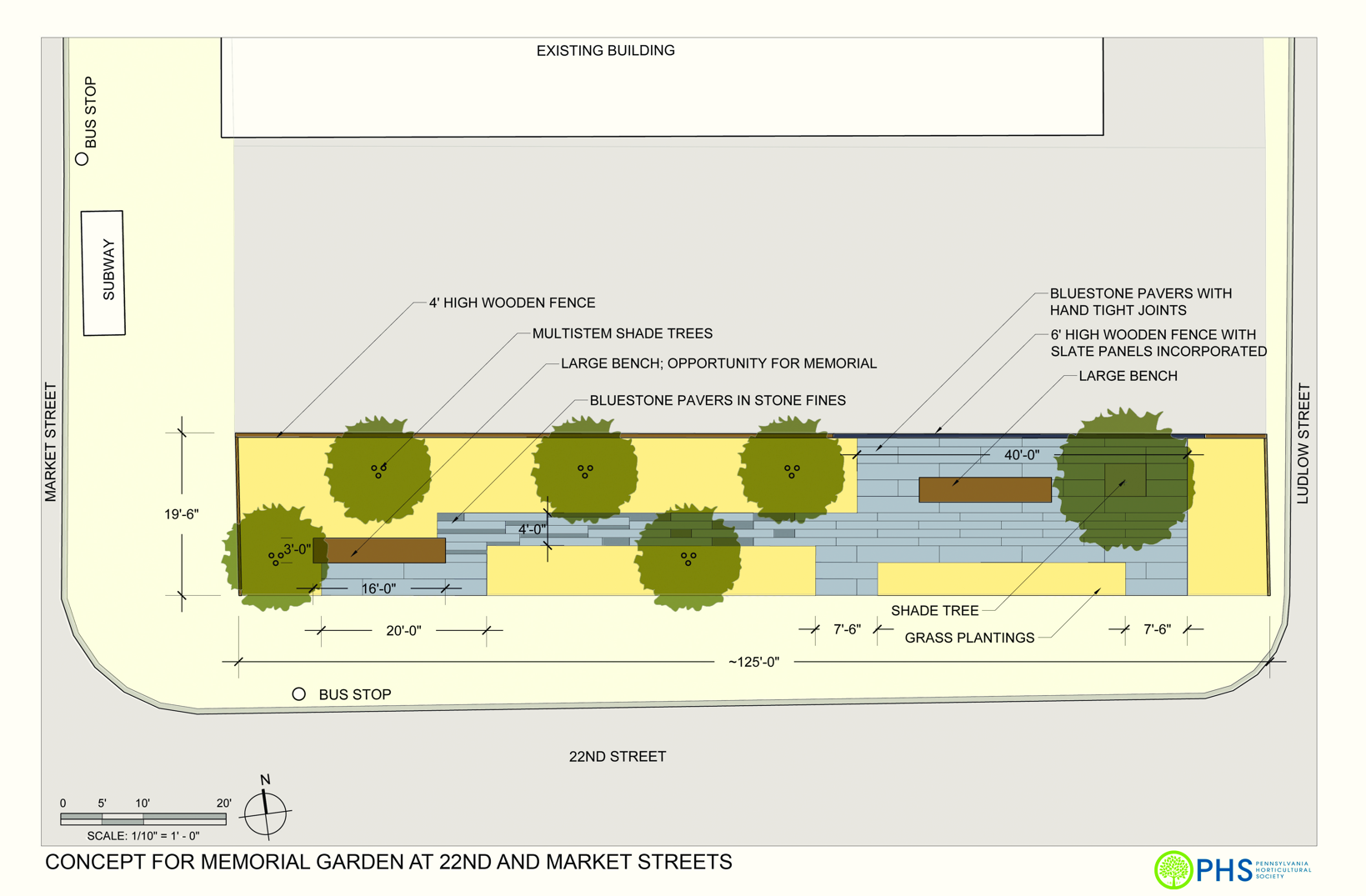
On the morning of June 5, 2013 six people died when a wall being carelessly demolished collapsed onto the Salvation Army store next door, at the corner of 22nd and Market streets, which was open for business. As we near the anniversary of that preventable tragedy, news broke last week that the Salvation Army will donate the site to the city.
The corner of 22nd and Market will become a public memorial park, honoring those whose lives were lost.
For months conversations have been ongoing about creating this memorial, perhaps at first in a temporary way. Now the idea is moving forward, with something more permanent in the works, thanks in large part to the efforts of City Treasurer Nancy Winkler. Winkler is the bereaved parent of Anne Bryan, a young Pennsylvania Academy of the Fine Arts student who lost her life that fateful morning while shopping in the Salvation Army. Winkler started an online petition to turn the site into a memorial park last year, garnering media attention and more than 6,000 signatures. Presumably Winkler’s political sway is one likely reason why the memorial park is actually happening.
Next there is fundraising to do and design work to complete. The volunteer memorial committee is trying to raise $250,000 through a crowdsourcing campaign. Design assistance will be coming in part from PAFA students and Pennsylvania Horticultural Society.
The corner of 22nd and Market would seem to be an ideal development location, particularly as Market West is changing. But if its future is to be devoted in perpetuity as a memorial, then the city must make the most of this opportunity. It is entirely possible to create a beautiful park that serves the city and subtly honors the memory of those who were killed or injured because of the demolition-turned-collapse.
As part the design considerations underway, I offer three thoughts about how this park can be a great public space that contributes to the shifting face of Market West.
It should be a tribute to life.
Memorials are created to help the living remember and honor. Creating a memorial park is an unusual move – we don’t often see the sites of preventable deaths becoming enduring memorials etched into our urban fabric. What happens when the raw memory fades, when grief subsides? If you take the long view, there’s a case to be made that this site must enliven this stretch of Market Street and enrich its public realm. A memorial park should serve as a testimonial to life that invigorates this alternately corporate and desolate stretch of Market Street.
Philly has plenty of memorials (most honoring those fallen during armed conflict) and monuments (most for veterans). Despite their importance to prior generations, some are forlorn public spaces, others even nearly forgotten. We can’t afford that lonely future for this important corner.
This park must be about the living. For this memorial park to have real staying power it must be a quality public space in its own right. That means honoring the memory of the lives lost by adding life back to this skinny lot. That can be done through substantial plantings, durable materials, artful flourish, and designing spaces where people feel comfortable stopping and resting. A memorial park is an opportunity to add real beauty and activity to what is a grim but changeful strip of the city.
It should be a place for peace.
A stated goal for the memorial park is for it to be “an oasis” and a place for reflection. Contemplative space in the city is a wonderful thing, but that’s a really tough ask for this busy spot – featuring a subway entrance, bus stop, lots of car traffic, vacant properties and high rises beyond. Can the site be framed gracefully to become a calm space where people actually want to spend time?
Philly has some pocket parks that work remarkably well as peaceful public spaces despite their active urban surroundings. These should be models as designers look for points of inspiration at this site.
Consider Collins Park (aka Chestnut Park) the little garden gem on the 1700 block of Chestnut. It’s a pocket park that offers shade, the peaceful sound of water and birds, and places to sit amid lush plantings. It’s not fancy, but it’s really nice. In part the space works as an urbane escape because it’s nestled in a mid-block location but also because the design creates the right conditions.
Collins Park couldn’t be more different from 22nd and Market but some of its features help us understand why it works: It is narrow, has quiet corners and lush plantings. Those attributes help create a quiet intimacy, and a park at 22nd and Market could borrow those concepts.
At the corner of 22nd and Market I’m hoping for concentrated landscaping that creates nooks and focuses inward. Low walls along two or three sides of the park will also help this open corner feel more inviting and enclosed. Large trees and benches or walls for seating can help draw people in. No Zen rock garden or grassy patch will do here.
It should be adaptable but lasting.
We don’t yet know what will be built surrounding this future park. The aged blightlord Richard Basciano still owns parcels along this stretch of Market Street and there are no clear public plans for his adjacent properties.
The near-term park design should be simple, dignified, and adaptable. It should minimize the unattractive fence line along Basciano’s property to the east and invite passersby to take a load off. But the park site should not become an amenity-to-be-swallowed-up into Basciano’s (or someone else’s) future development. That would be a gross mistake.
To have a life of its own this memorial park needs to be enduring but flexible. Practically speaking that means some of the high-ticket items should be able to be reused in case the park requires a redesign down the road.
The worst thing that could happen in the life of this park is that it becomes a boring, limp spot where no one wants to be. We have a lot of memorials in this city, some are beautiful pieces of art in their own right that contribute to a rich public landscape. This memorial park must aspire to be lasting so it may have a chance to stand the test of time.
Given our short civic memories, this should be a place where beauty and good design rule the day, with a message of life that is enduring.
There will be a community presentation about the project and park design on Tuesday, April 1 at 6pm at the College of Physicians.
WHYY is your source for fact-based, in-depth journalism and information. As a nonprofit organization, we rely on financial support from readers like you. Please give today.



